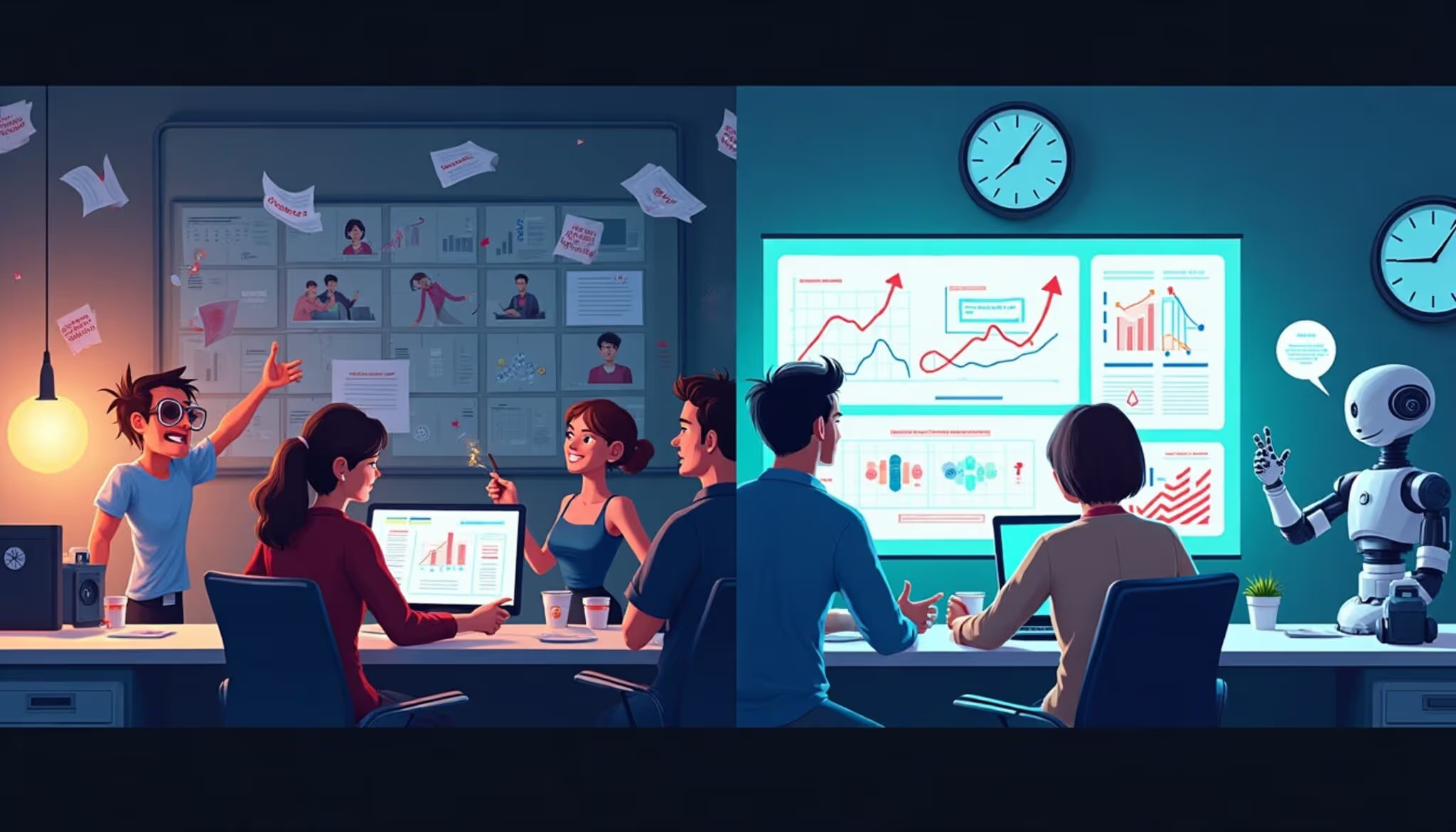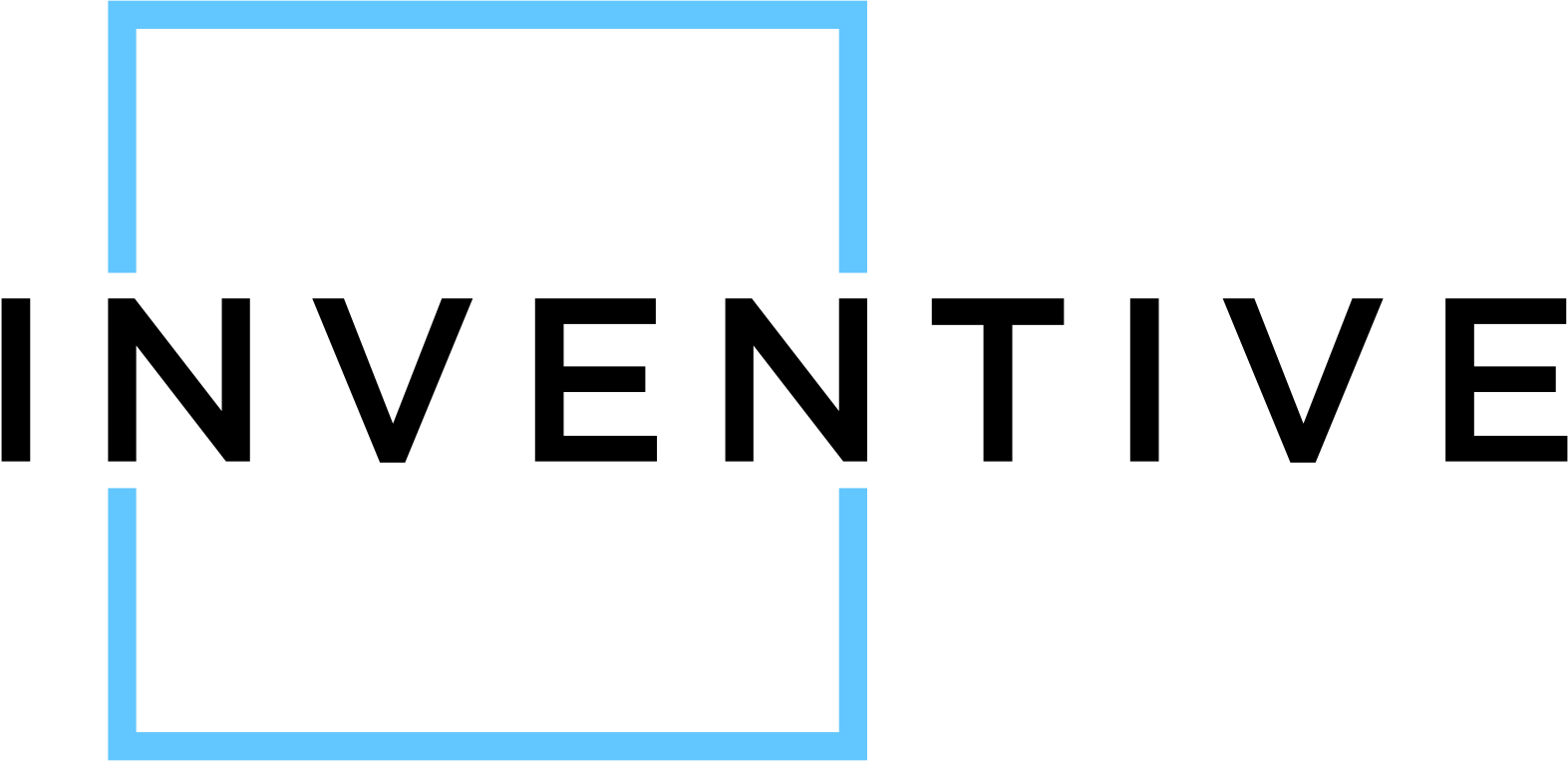You’re Targeting “Everyone” But Converting No One
AI tools segment your audience based on actual behavior, helping you personalize your offers and hit the right people.


You’re Targeting “Everyone” But Converting No One
AI tools segment your audience based on actual behavior, helping you personalize your offers and hit the right people.
Sharpen Your Segments
You’re not for everyone—and that’s a good thing. AI finds your real fans.
Market to the Right Crowd
AI shows you who’s ready to buy, not just browse.
BUSINESS PROBLEM

In the competitive landscape of digital marketing, businesses across various sectors are struggling with the same fundamental challenge: attempting to cast too wide a net and ending up with empty results. Companies like Hubble Contacts, Casper, and Blue Apron demonstrated this issue when their initial broad-market approaches led to diluted messaging and poor conversion rates. According to a 2022 study by the Content Marketing Institute, 67% of SMBs waste over 30% of their marketing budget on poorly targeted campaigns aimed at "everyone," resulting in customer acquisition costs nearly triple what they could be with proper targeting.
This inefficiency creates a cascading effect throughout these organizations. Marketing teams at companies like MailChimp and Hootsuite initially struggled with this issue, spending countless hours creating generic content that failed to resonate with any specific audience segment. The strain on these teams becomes evident in terms of both resource allocation and morale. Marketing professionals at these firms reported feeling frustrated when their efforts yielded minimal results, leading to higher turnover rates. A 2023 survey by Forrester revealed that marketers at companies with undefined target audiences were 2.8 times more likely to report job dissatisfaction and burnout compared to those with clear ideal customer profiles.
The financial impact extends beyond wasted ad spend. WhenIWork, a scheduling software company, shared that before narrowing their focus to specific industries, they spent approximately 40% more on customer support as their generic messaging attracted poor-fit customers who required extensive onboarding yet had high churn rates. Similarly, Drift documented how their broad targeting approach initially resulted in a 35% increase in sales cycle length as representatives spent valuable time qualifying leads that were fundamentally misaligned with their offering. This inefficiency directly impacts cash flow, diminishes ROI, and prevents businesses from scaling effectively.
The technological solution gap is equally concerning. Despite the availability of sophisticated segmentation tools, 58% of SMBs still rely primarily on basic demographic data rather than behavioral insights or customer journey analysis. Companies like ThirdLove and Warby Parker dramatically improved their conversion rates (by 47% and 38% respectively) after implementing AI-driven customer segmentation tools that allowed them to move beyond broad targeting. These success stories highlight how most businesses are operating with unnecessary inefficiency by continuing to use human judgment to make targeting decisions that AI and automation could handle with greater precision and at scale.
Perhaps most telling is the impact on brand perception and market positioning. Businesses attempting to be everything to everyone ultimately become nothing to anyone. Thinx underwear and Glossier initially suffered from this issue, with early messaging so broad that potential customers couldn't clearly identify if the products were right for them. Once these companies pivoted to highly specific targeting with tailored messaging for distinct customer segments, they not only saw conversion rates increase but also experienced a 3.5x improvement in customer retention and a 65% increase in referral marketing effectiveness. This transformation demonstrates how the "target everyone" approach not only hampers immediate sales but fundamentally limits a company's ability to build the loyal customer base necessary for sustainable growth.
SOLUTIONS

Problem 1:
Businesses are wasting marketing budgets on poorly targeted campaigns aimed at "everyone," resulting in high customer acquisition costs and poor conversion rates.
Solution 1:
A Make.com workflow that automates customer segmentation based on behavioral data from CRM systems and website interactions. This solution connects Hubspot/Salesforce with web analytics platforms to automatically categorize leads into targeted segments based on their behavior, industry, and engagement patterns. The workflow triggers personalized email campaigns for each segment through platforms like Mailchimp, ensuring marketing messages resonate with specific audience needs rather than using a one-size-fits-all approach.
Problem 2:
Marketing teams spend countless hours creating generic content that fails to resonate with specific audience segments, leading to resource waste and team burnout.
Solution 2:
An N8N workflow that automates content personalization based on customer data. This solution pulls customer information from a CRM system, analyzes engagement patterns using AI tools, and then automatically tailors content for different segments. The workflow connects tools like Google Analytics, CRM platforms, and content management systems to identify which content resonates with specific audiences, then uses these insights to generate personalized content recommendations for marketers. This significantly reduces the manual effort needed to create targeted content while improving engagement metrics.
Reference: https://n8n.io/workflows/1084-personalize-website-content-based-on-visitors-company/
Problem 3:
Companies attract poor-fit customers due to generic messaging, resulting in increased customer support costs and high churn rates.
Solution 3:
A Make.com workflow that qualifies leads based on fit criteria before they enter the sales pipeline. This solution connects form submissions and chat interactions to an automated scoring system that evaluates leads against ideal customer profile criteria. High-fit prospects are automatically routed to sales, while low-fit leads receive alternative resources or are directed to more appropriate offerings. The workflow integrates with website forms, chat tools like Intercom, CRM systems, and email marketing platforms to ensure only qualified leads progress through the funnel, reducing strain on support teams and improving customer retention.
Problem 4:
Despite available technology, most SMBs still rely primarily on basic demographic data rather than behavioral insights for customer segmentation.
Solution 4:
An N8N workflow that implements AI-driven customer journey analysis for improved targeting. This solution automatically collects customer behavioral data from multiple touchpoints (website, email, purchase history, support interactions) and uses machine learning algorithms to identify patterns and segment customers based on their actual behaviors rather than just demographics. The workflow connects analytics platforms, CRM systems, and marketing tools to build comprehensive customer profiles that power more precise targeting strategies, similar to the approach that helped companies like ThirdLove and Warby Parker dramatically improve their conversion rates.
Reference: https://n8n.io/workflows/1285-track-customer-journey-through-multiple-systems/
Problem 5:
Generic messaging hampers brand perception and market positioning, preventing businesses from building the loyal customer base needed for sustainable growth.
Solution 5:
A Make.com workflow that automates tailored messaging delivery based on customer segment and lifecycle stage. This solution tracks customer interactions across multiple channels and automatically adapts messaging to reflect where customers are in their journey and which segment they belong to. The workflow integrates email marketing tools, social media platforms, CRM systems, and analytics tools to ensure consistent yet personalized messaging that strengthens brand perception for specific audience segments. This approach helps businesses build stronger connections with target customers, similar to how Thinx and Glossier improved their customer retention and referral marketing after pivoting to segment-specific messaging.
Sharpen Your Segments
You’re not for everyone—and that’s a good thing. AI finds your real fans.
LIFE AFTER

Imagine a small business, "Techify Solutions," grappling with the universal challenge of marketing to "everyone" and converting no one. Initially, Techify's marketing team, in a desperate bid to capture the wide market, spread their budget thin on generic campaigns that stirred the waters but caught little fish. By attempting to appeal to a wide audience, their messaging became diluted, echoing the struggles faced by well-known brands like Hubble Contacts and Casper. This led to astronomical customer acquisition costs, triple those achievable with smart targeting, as found by a 2022 Content Marketing Institute study.
But what if Techify Solutions had embraced tailored automation solutions? Picture this: they implement a Make.com workflow that connects their CRM system with web analytics, effectively automating customer segmentation based on behavioral data. This nifty solution helps them whip up personalized campaigns that resonate deeply with specific segments, rather than casting a generic marketing net. The results? A noticeable drop in customer acquisition costs and a marked improvement in conversion rates. Suddenly, Techify’s marketing team finds themselves less stretched and more focused, leading to a boost in morale and a reduction in job dissatisfaction, a pain point addressed by a 2023 Forrester survey showcasing higher turnover rates tied to broad targeting.
Looking further into the future, Techify Solutions could leverage an N8N workflow to automate content personalization. This way, content not only reaches the right eyes but also speaks directly to the intended audience, reducing manual content creation labor and boosting engagement. As this automated system pulls data from their CRM to tailor content, the team spends less time in the trenches of generic messaging. They instead celebrate the increased efficiency and engagement metrics as their personalized content strategy takes off, positioning them for scalable growth and long-term success, much like how Warby Parker blossomed post-automation【4:12†source】.
Finally, consider the customer experience transformed by a Make.com workflow designed to qualify leads. Techify Solutions shifts from being inundated with low-quality leads that drain resources to engaging high-fit prospects who seamlessly integrate into their sales funnel. This efficient lead-sorting process drastically cuts customer support costs and minimizes high churn rates, just as WhenIWork discovered when fine-tuning their focus. Envision Techify as it redefines its brand position, now the epitome of a business that "gets" its customers, as only Thinx and Glossier could — a brand vibrant and full of life, not trying to be everything to everyone, but rather everything to a finely honed and appreciative audience.
Market to the Right Crowd
AI shows you who’s ready to buy, not just browse.
Customer Testimonials
Our AI, Agent, and workflow automation has saved customers countless hours.
Equipped with stellar development proficiency, Inventive devised a reliable system that mirrored their client's technical requirements. The team's dedication, top-notch communication, and transparent project management skills guaranteed a progressive and agreeable engagement.


Inventives' efforts have enhanced the design and experience of the site, which have received positive feedback from visitors. They provide a comprehensive set of services that has proven to be economical and reliable. They are collaborative and proactive in delivering high-quality work on time.


Exhibiting ample control of their technical expertise, Inventive Works rewarded the client with a sustainable web app, which their engineering team found manageable and seamless. Proactive and adaptable, the team generated precise solutions and productive ideas while remaining receptive to feedback



